Risks and opportunities related to environmental issues such as climate change and biodiversity conservation, as well as the measures to address them, are proposed through the Climate Change Project. These measures are discussed by the Sustainability Committee and the Risk Management Committee, both of which are comprised of the Representative Director, President and Executive Officer, other executive officers, Audit and Supervisory Committee members, and department heads (including officers at subsidiaries). Following these discussions, final decisions are made by the Board of Executive Officers, the Company’s central body for business execution, under the supervision of the Board of Directors. Progress on approved measures is reported at the Sustainability Committee. Meanwhile, progress on key risk-related matters is reported to the Risk Management Committee, ensuring consistent monitoring of company initiatives.
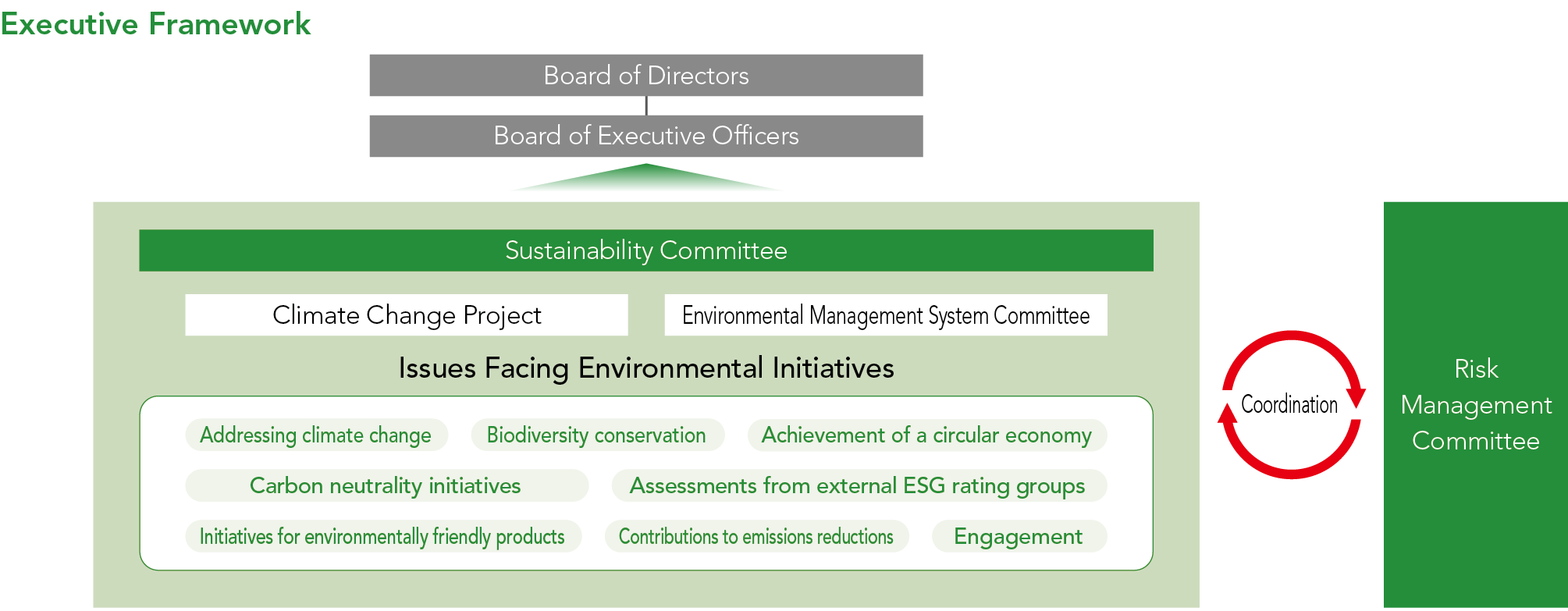

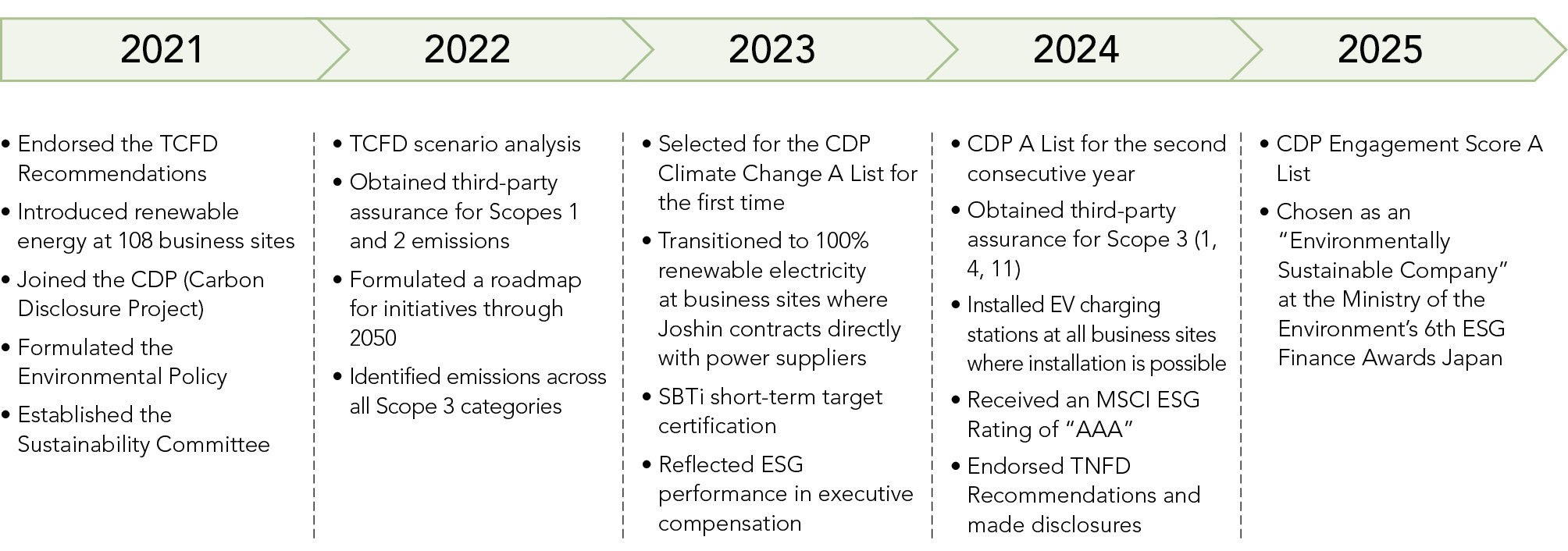
Risk Management
The Joshin Group analyzes medium- to long-term issues impacting our businesses and identifies potential risk factors, which are then used to formulate a medium- to long-term business strategy. The Climate Change Project reviews progress on environmental initiatives and challenges therein, and then reports are submitted to the Sustainability Committee.
Upon receiving the Sustainability Committee’s reports, the Board of Executive Officers deliberates on the Joshin Group’s environmental response and all other sustainability matters. This is all supervised by the Board of Directors. Furthermore, the Risk Management Committee examines and manages key risks identified within the Group.
The Joshin Group conducts scenario-based analyses assuming global average temperature increases of 1.5/2°C and 4°C respectively, with the aim of assessing the risks and opportunities that climate change poses to the Group and impact on our businesses, as well as formulating appropriate countermeasures.
For each average temperature increase scenario, we identify the impact on businesses under the transition risks, physical risks, and related business opportunities, and we are already taking steps toward implementing response measures by 2030. The Group’s main long-term objectives through 2050 are outlined under the seven material issues. Based on this foundation, we analyze the potential impact of climate change, and under both temperature scenarios, we formulate new growth opportunities aligned with our business strategy and medium-term management plan.
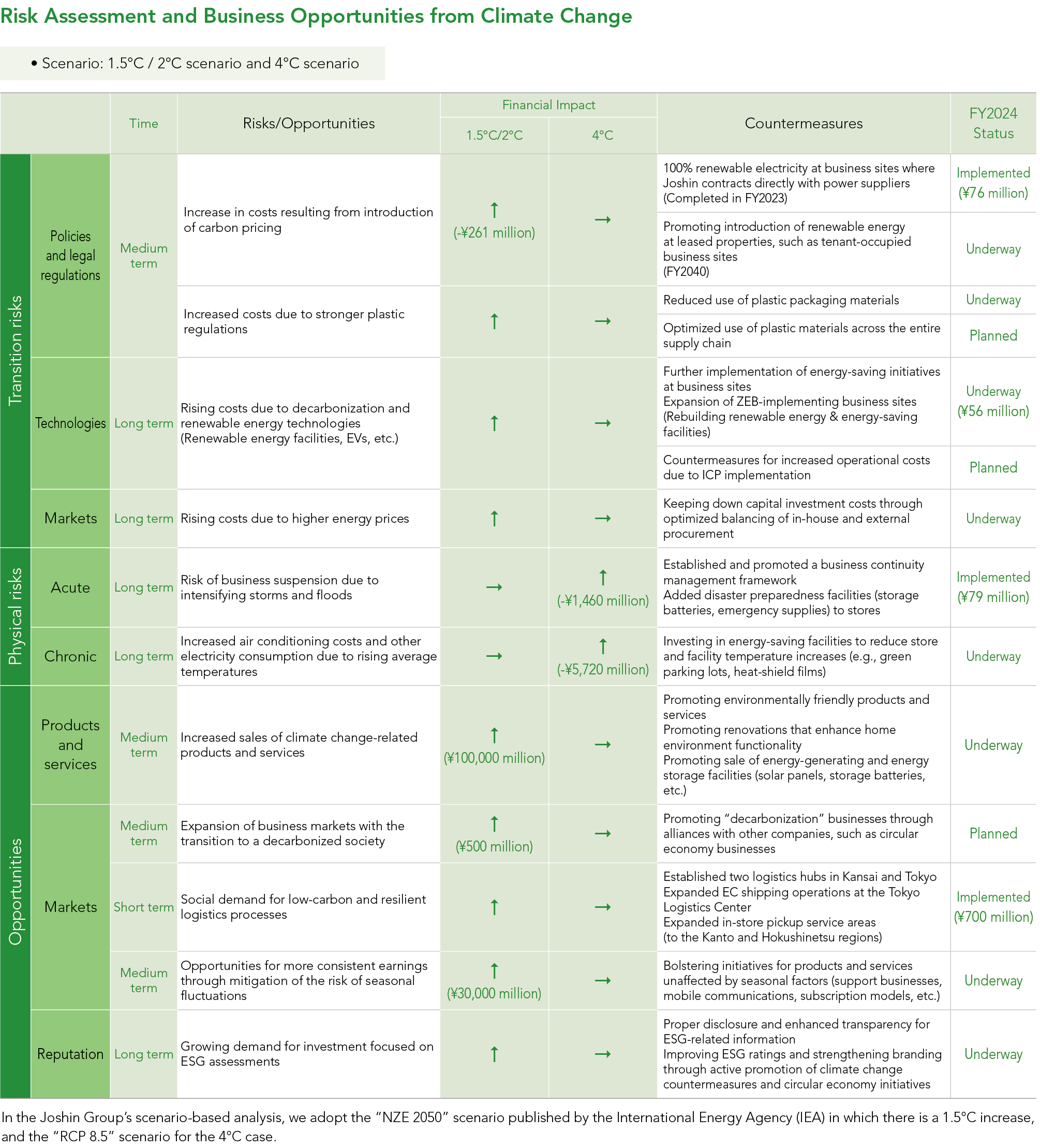
Metrics and Targets
Roadmap for a Major Action Plan for Environmental Issues
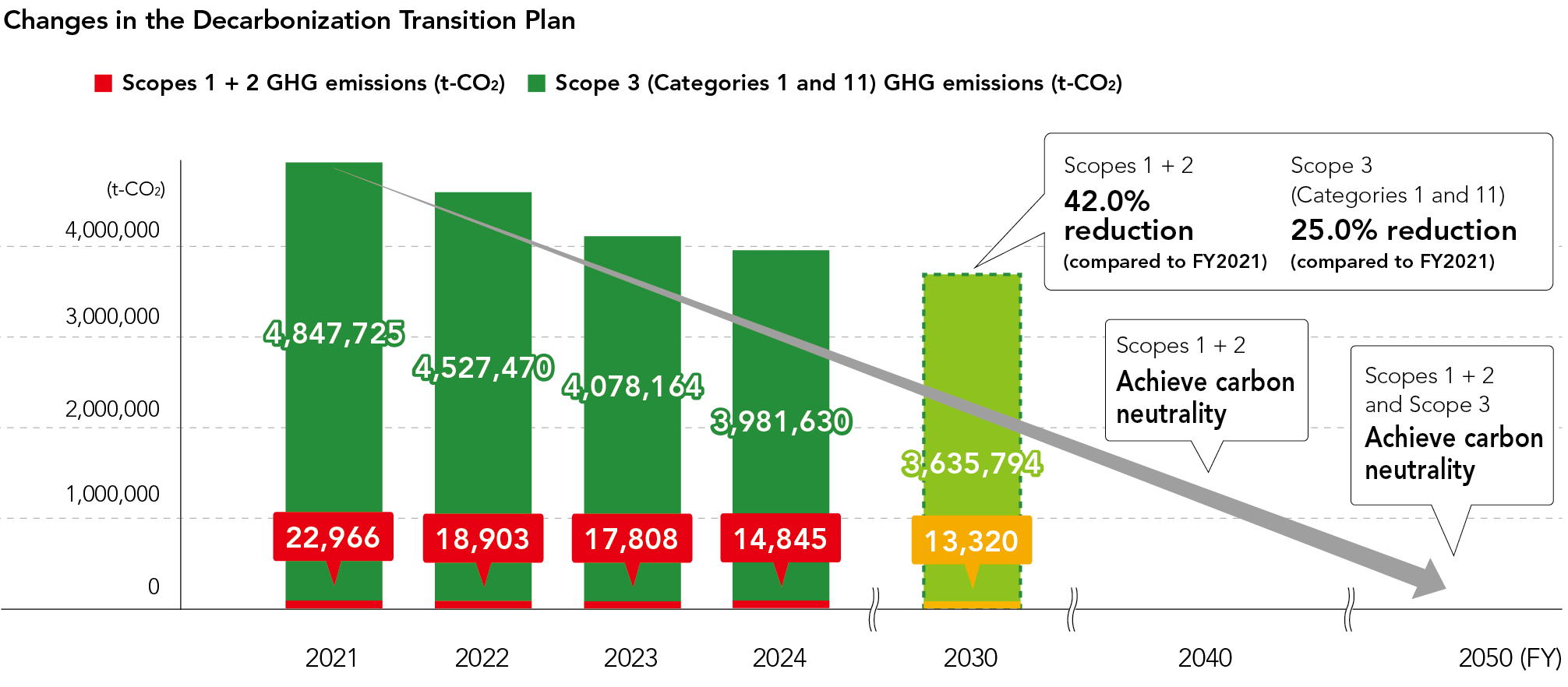
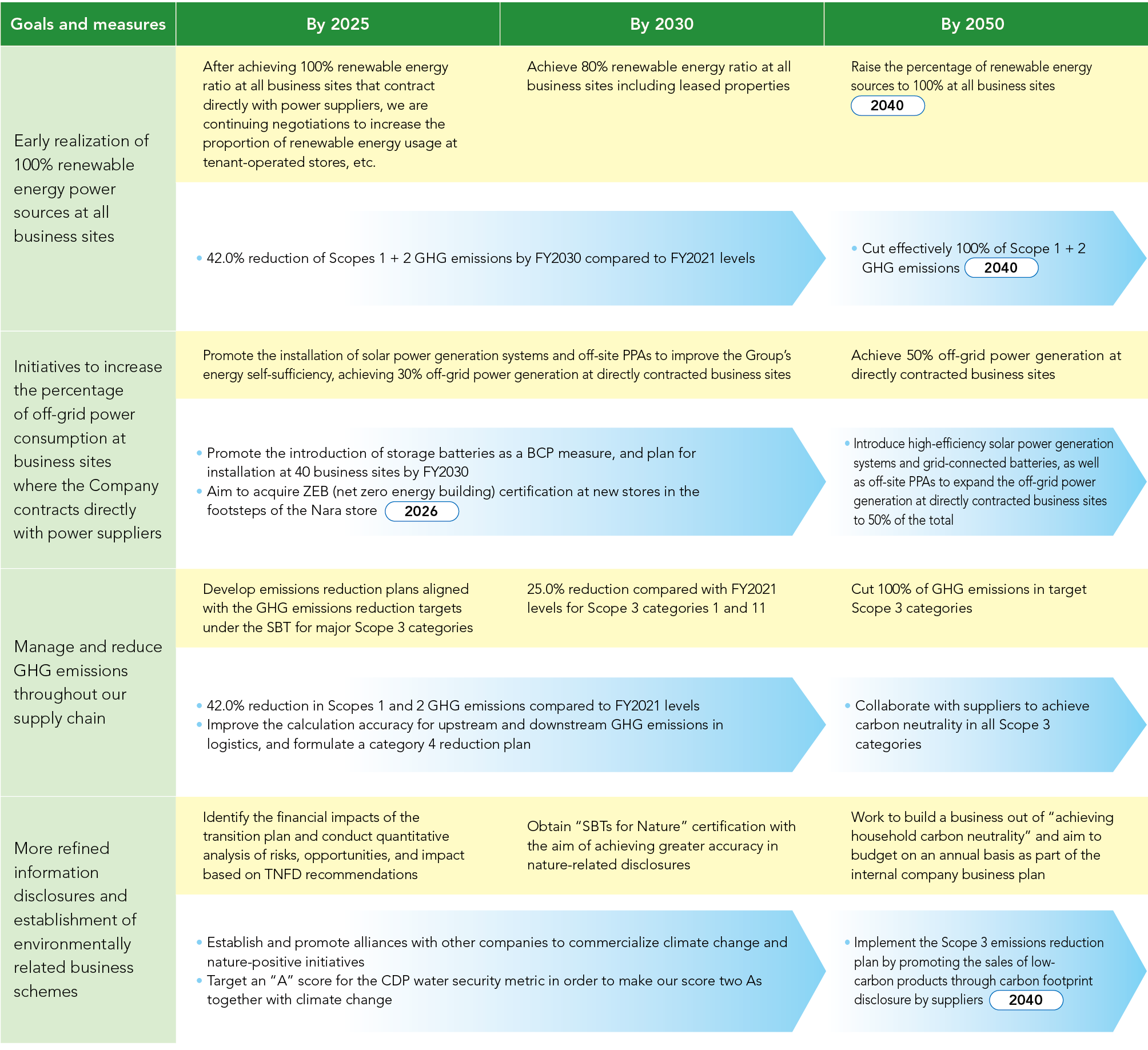
.jpg)
